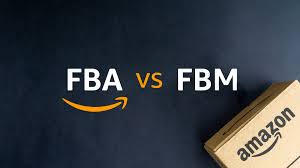Conducting thorough market research is crucial for identifying profitable product opportunities on Amazon FBA. Here are some steps to guide you through the product research and selection process:
- Identify Your Target Market: Determine the specific market or niche you want to target. Consider factors such as customer demographics, interests, and purchasing behavior. By narrowing down your focus, you can tailor your product selection and marketing efforts more effectively.
- Explore Best-Seller Categories: Browse through Amazon’s best-seller categories to identify popular product trends. Pay attention to products with high demand and consistent sales ranks. These categories can give you insights into what customers are currently buying and what niches have potential for profitability.
- Utilize Amazon Tools: Amazon provides various tools and resources to assist with product research. These include the Amazon Best Sellers Rank (BSR), Amazon Movers & Shakers, and the Amazon FBA Revenue Calculator. These tools can help you gauge product demand, competition, and potential profitability.
- Analyze Customer Reviews: Read customer reviews for products in your target niche. Look for common complaints, unmet needs, or potential product improvements. This can help you identify opportunities to offer a better product that meets customers’ preferences or solves their pain points.
- Competitor Analysis: Study your competitors’ products within your target niche. Analyze factors such as pricing, product features, branding, and customer reviews. Identify gaps in the market or areas where you can differentiate your product to offer a unique selling proposition.
- Consider Seasonality and Trends: Evaluate whether the product you’re considering has consistent demand throughout the year or if it’s subject to seasonal fluctuations. Additionally, stay updated on emerging trends and consider products that align with current consumer preferences or emerging markets.
- Assess Profitability: Calculate the potential profitability of a product by considering factors such as manufacturing or sourcing costs, Amazon FBA fees, shipping costs, and potential selling price. Ensure that your profit margins are sufficient to cover expenses and generate a desirable return on investment.
- Evaluate Product Sourcing and Logistics: Consider the feasibility of sourcing the product at a reasonable cost and ensuring reliable supply. Evaluate shipping and logistics considerations, including packaging requirements, shipping times, and any legal or regulatory considerations for importing or exporting goods.
- Validate Demand Outside of Amazon: Check if there is demand for the product beyond Amazon’s marketplace. Research other e-commerce platforms, social media trends, and industry-specific forums or communities to gauge interest and potential sales channels.
- Make an Informed Decision: Based on your research, select a product that aligns with market demand, has manageable competition, offers good profit margins, and fits your overall business goals and capabilities.
- Define your target market: Start by identifying the target market or niche you want to focus on. Consider factors such as demographics, interests, and purchasing behavior. This will help you narrow down your options and understand your potential customers better.
- Analyze product demand: Use tools like Jungle Scout, Helium 10, or AMZScout to analyze product demand on Amazon. Look for products with high sales volume and consistent demand. Pay attention to trends, bestseller rankings, and customer reviews to understand which products are popular and have potential for profitability
- Identify product opportunities: Look for gaps or untapped niches within your target market. Explore product categories with less competition or low availability of high-quality products. Consider customer pain points and find products that solve those problems or cater to specific hobbies or interests.
- Evaluate competition: Assess the level of competition for potential products. Look at the number of sellers, their ratings, and the quality of their listings. If a product has too much competition, it may be challenging to stand out and generate sufficient sales. Aim for a balance between demand and competition.
- Consider profit margins: Calculate the estimated profit margins for potential products. Take into account factors like product cost, shipping fees, Amazon FBA fees, and other expenses. Ensure that the profit margin is sufficient to cover your costs and generate a reasonable return on investment.
- Validate product demand outside of Amazon: Research if there is demand for your potential products outside of Amazon. Look at social media platforms, forums, and other websites to see if people are talking about or seeking out those products. This can give you an indication of broader market interest and potential sales channels beyond Amazon.
- Assess product scalability: Consider the scalability of the product. Look for products that are easy to source or manufacture at a larger scale without compromising quality. Scalable products allow for long-term growth opportunities within your business.
- Evaluate shipping and logistics: Consider the size, weight, and fragility of the product. Products that are lightweight, durable, and easy to ship tend to align well with the logistics of Amazon FBA. Ensure that the product can be safely and cost-effectively shipped to Amazon‘s fulfillment centers.
- Branding and differentiation: Consider how you can differentiate your product and create a unique selling proposition. Can you offer a better design, additional features, or superior customer service? Building a strong brand and unique value proposition can help you stand out from the competition and attract customers.
Remember, product research is an ongoing process. Continuously monitor market trends, customer feedback, and competitor activity to adapt and optimize your product selection strategy over time.
SHARE
